Yonghe Zheng, Danhua Zhou, Jingying Wang
Distance Education In China.
2023, 43(9):
1-9.
Science education is the main battlefield for achieving independent cultivation of scientific and technological innovation talents, and exploring the connotation and methods of science education is an important foundation for promoting the implementation of science education addition in the new era. Science education is to study how science becomes human active learning action, which is embodied in the knowledge content, process methods, teaching rules and social interaction in the field of science education. This paper explores its essence, core problems and pathways to deeply reflect the important issues of science education in the new era. The essential connotation of science education has gradually enriched in its evolution. So far, it has formed an interactive representation involving multiple visions such as cognition, behavior, emotion and society. The policy evolution of the times and the diversified subjects’ themes explain the stage of the development of science education. The concept of competence-oriented talent and the continuous cultivation concept have become the educational trend of contempo rary science education. The core issues of science education are reflected in the process of students’ learning, teachers’teaching and their interaction in China.There are prominent problems in science education teaching and learning, namely, the low level of thinking and emotional skills behind students' high academic achievements, the weakness of teachers’ specialized subject teaching compared to interdisciplinary and inquiry-based teaching, and the lack of high-level thinking cultivation for students to excel in dual foundation mastery. Therefore, scientific education research in China should extensively carry out empirical and interdisciplinary research based on emerging technologies and physiological evidence, effectively promote the teaching practice of high-level thinking such as concept transformation, metacognition, scientific argumentation, reasoning and modeling, and deeply tap the teaching and learning laws in science education to achieve the goal of educating people in science education.


